¶ Master Stable Diffusion Inpainting with Shakker AI Features
Stable Diffusion Inpainting is a powerful technique for fixing image defects, refining AI-generated art, or making seamless edits to visuals. Whether you’re repairing a missing detail, replacing a background, or reimagining specific image elements, inpainting ensures the output blends seamlessly with the surrounding context.

Tools like Stable Diffusion inpainting pipelines have made this process accessible to professionals and hobbyists alike. For more advanced tasks, solutions like Shakker AI take inpainting to the next level, offering cutting-edge features and user-friendly interfaces. In the guide, we’ll explore the basics of Stable Diffusion Inpainting, its mechanics, beginner-friendly steps, and advanced tips to get the most out of tools like Shakker AI.
¶ Part 1: What Is Stable Diffusion Inpainting?
Stable Diffusion inpainting refers to the process of regenerating selected parts of an image using AI while preserving the unmasked areas. This technique is particularly useful for fixing imperfections, filling gaps, or reimagining specific image sections while maintaining overall consistency. Unlike traditional image editing, Stable Diffusion Inpainting leverages deep learning to ensure seamless blending between the inpainted region and the rest of the image.
At its core, inpainting involves defining a mask over the area you want to modify or regenerate. Once the mask is in place, the Stable Diffusion model works to fill the masked area with visually coherent content. The Stable Diffusion InpaintPipeline and Stable Diffusion InpaintPipelineLegacy are commonly used frameworks for this task. While the former incorporates updated algorithms for better results, the latter retains compatibility with older model versions.
Inpainting plays a crucial role in refining AI-generated images. For instance, when creating digital art, you may notice awkward distortions in certain parts of the image. Stable Diffusion inpainting allows you to fix these errors while keeping the rest of the image intact, ensuring a polished final result.
¶ Part 2: How Stable Diffusion Inpainting Works
Understanding the Stable Diffusion inpainting process is key to mastering its application. Here’s a simplified breakdown of how it works:
- Variational Autoencoder (VAE): The input image is encoded into a latent space, where key features and textures are represented.
- Prompts and Embeddings via CLIP: Text prompts and embeddings guide the model on how to regenerate the masked area.
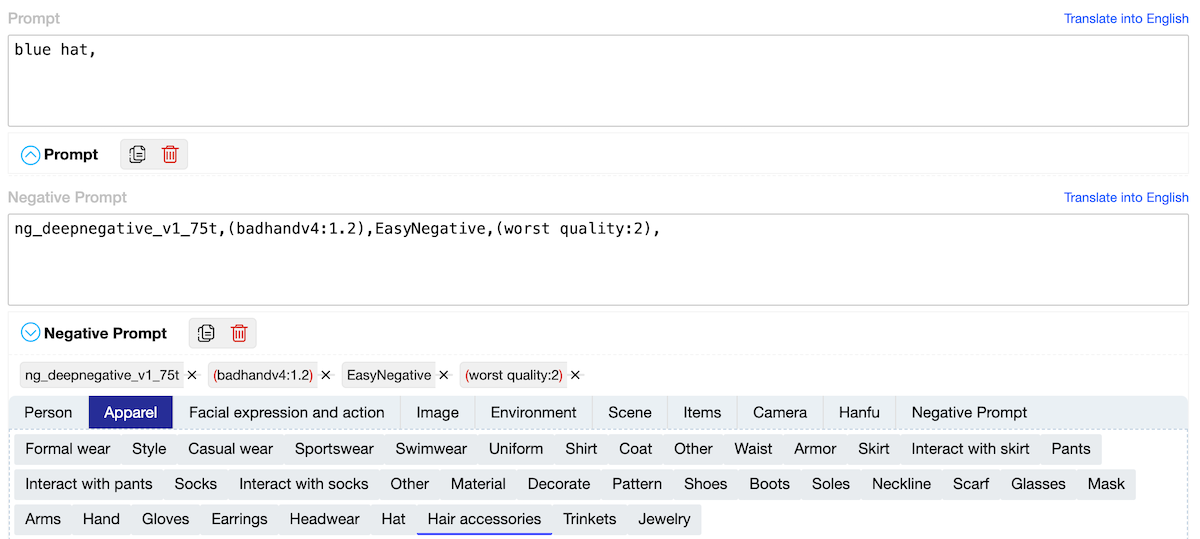
- Iterative Noise Reduction with UNet: Noise is added to the latent space and iteratively reduced, ensuring the generated content aligns with the prompt and context.
- Final Decoding with VAE: The refined latent space is decoded back into the image space, producing the final output.
¶ The Inpainting Algorithm
- Mask Creation: Users define the area to modify by painting over the region with a mask.
- Noise Adjustment: The model introduces controlled noise to the masked area and regenerates it based on surrounding information.
- Consistency Checks: The system ensures the inpainted content blends seamlessly with unmasked regions.
Real-world applications of inpainting Stable Diffusion include tasks like fixing missing objects, repairing artifacts, or regenerating distorted faces. For instance, if an AI-generated portrait has a blurry hand or missing ear, inpainting can fill in these gaps with realistic detail.
¶ Part 3: Beginner’s Guide to Inpainting with Stable Diffusion
If you’re new to inpainting Stable Diffusion, follow this step-by-step guide to get started:
¶ Step-by-Step Instructions
- Select a Model: Choose an appropriate model, such as the RunwayML SD-inpainting checkpoint or v1.5 inpainting model.

- Mask the Area to Edit: Use tools like AUTOMATIC1111 to create a mask over the part of the image you want to modify.
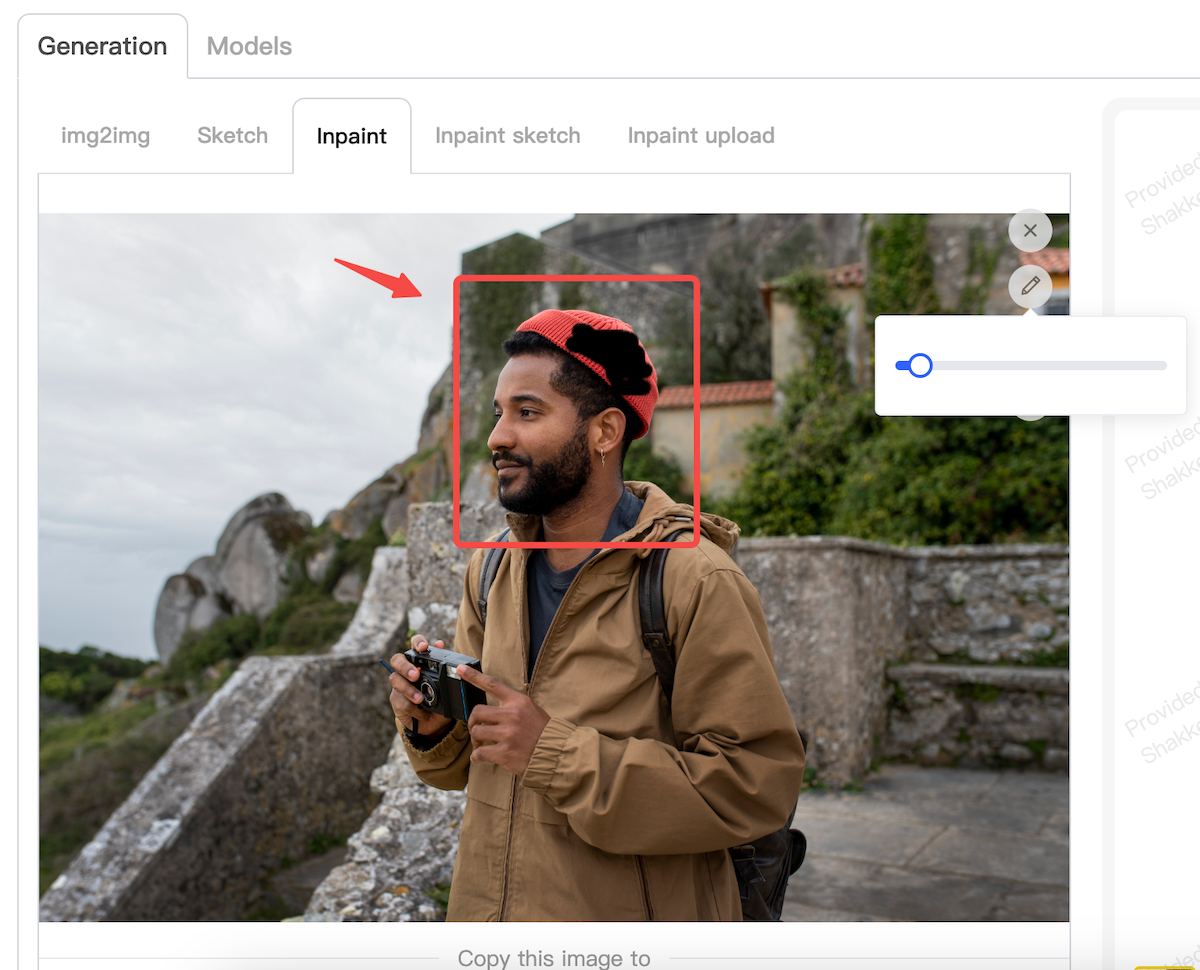
- Adjust Inpainting Settings: Fine-tune parameters like image size, denoising strength, and mask content for optimal results.
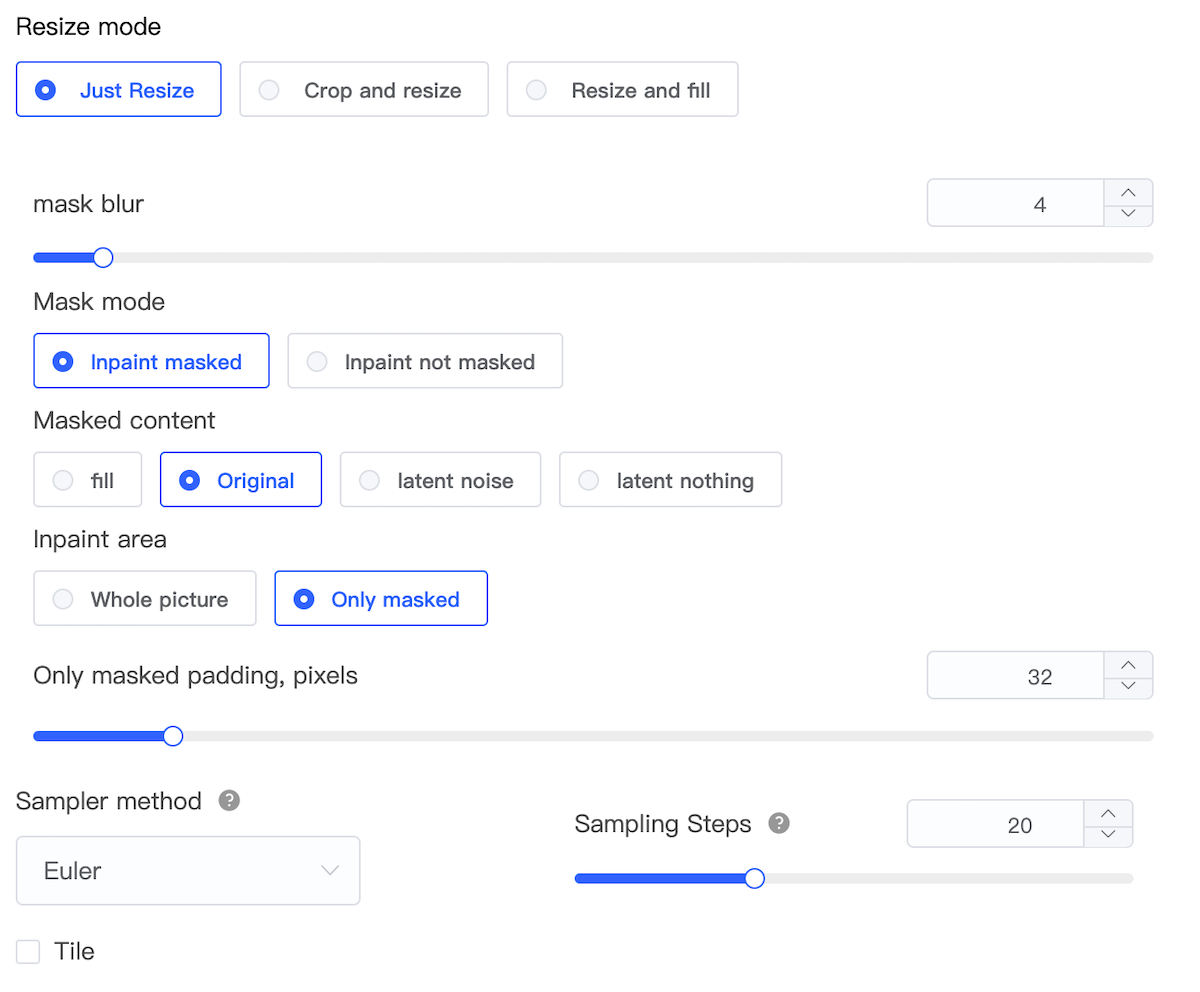
- Generate Outputs: Run the inpainting model to create refined edits of the masked area.
¶ Tips for Better Results
- Use Fine-Tuned Models: Opt for specialized inpainting models for tasks like portrait editing or object removal.
- Experiment with Prompts: Adjust text prompts and guidance scale (CFG) to achieve the desired effect.
- Balance Denoising Strength: Avoid excessive noise reduction, as it can lead to over-smoothing.
By following these steps, even beginners can successfully inpaint Stable Diffusion outputs, achieving seamless and professional-looking results.
¶ Part 4: Advanced Inpainting with Shakker AI
For users seeking more advanced tools, Shakker AI offers a feature-rich platform for Stable Diffusion inpainting and beyond. Here’s what makes Shakker AI stand out:
¶ Shakker AI’s Inpainting Features
- Canvas Tools: Includes inpainting, outpainting, and smart remove functionalities.
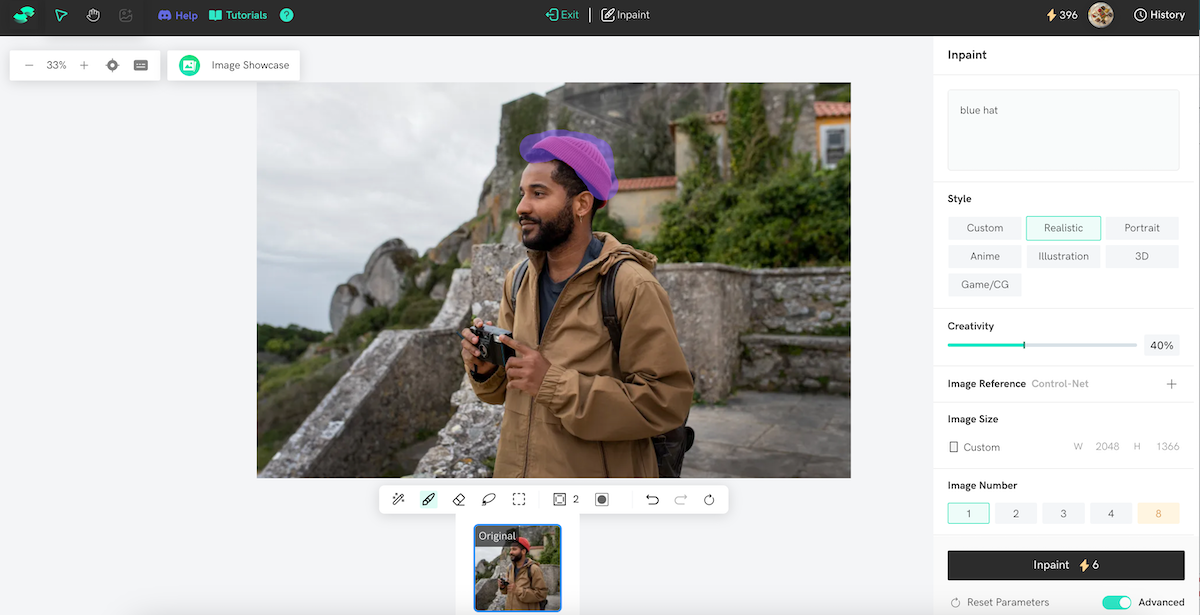
- Integration with A1111 WebUI and ComfyUI: Provides advanced customization options for seasoned users.
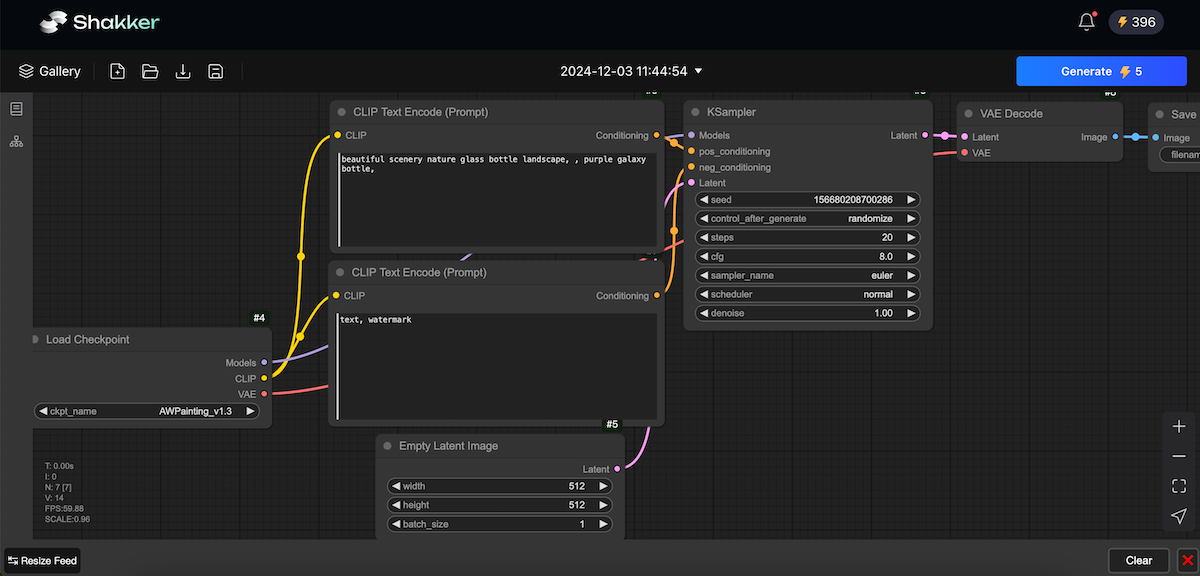
- Diverse Model Community: Access models for various styles, including anime, photography, and illustration.
¶ Advantages of Shakker AI
- Precision Editing: Shakker AI’s intuitive interface allows for precise mask creation and edits.
- Versatile Tools: Combine inpainting with tasks like upscaling, background removal, or texture generation.
- Seamless Workflow: The platform’s robust algorithms ensure smooth blending and high-quality results.
¶ Real-World Example
Imagine you’re editing an AI-generated landscape where a tree is oddly placed. Using Shakker AI’s inpaint stable diffusion capabilities, you can mask the tree, adjust denoising strength, and regenerate the area with a realistic background that blends perfectly with the surroundings.
¶ Part 5: Stable Diffusion Inpainting Best Practices
To make the most of Stable Diffusion inpainting, consider these best practices:
- Choose Task-Specific Models: Different inpainting models are optimized for specific tasks like facial edits or object removal.
- Maintain Balanced Denoising: Excessive denoising can lead to a loss of detail, while too little can produce noisy outputs.
- Apply Accurate Masks: Smaller, precise masks improve inpainting speed and accuracy.
- Experiment with Tools: Platforms like Shakker AI enable users to explore advanced features for enhanced results.
Incorporating these tips will ensure you achieve consistent, high-quality outputs while refining your inpainting skills.
¶ Conclusion
Stable Diffusion Inpainting is a transformative tool for enhancing AI-generated visuals, offering endless possibilities for creative edits and problem-solving. From fixing minor defects to creating entirely new visual elements, inpainting is an essential skill for anyone working with AI-generated content. Tools like Shakker AI elevate the process, providing advanced features and a seamless user experience. Whether you’re a beginner or a seasoned editor, combining inpainting with other AI-driven features opens new doors for creative exploration. Dive into Stable Diffusion inpainting today and unlock the full potential of AI-powered image editing.